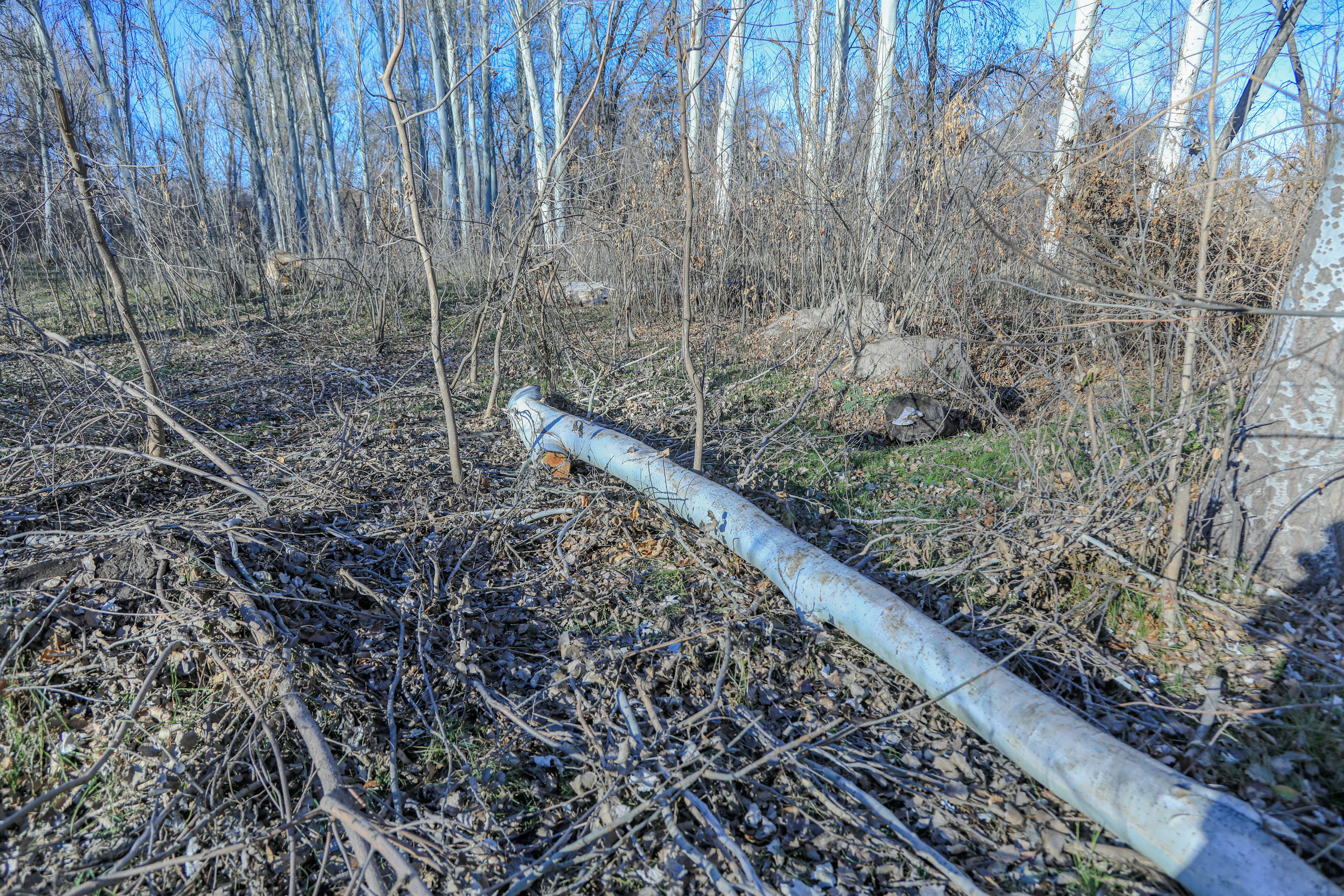
Have you ever wondered how cutting down a tree in the Amazon rainforest could possibly affect the temperature on our planet? The connection between deforestation and global warming is more intricate than you might think. It’s time to shed light on this pressing issue—and understand why urgent action is needed.
Understanding Deforestation
What is Deforestation?
Deforestation refers to the large-scale removal of forests, often resulting in irreversible changes to the landscape. This practice can occur due to logging, agriculture, urban development, and more. When forests are cleared, the trees that once absorbed carbon dioxide are removed, upsetting the natural carbon balance.
Causes of Deforestation
There are several major causes of deforestation. Let’s break them down:
- Agriculture Expansion: This includes both large-scale farming and smallholder agriculture. As the demand for food and biofuels grows, forests are often cleared to make way for crops like soybeans and palm oil.
- Logging: Trees are cut down for timber, paper, and other wood products. Illegal logging also poses a significant threat to forests worldwide.
- Urbanization: Cities are expanding, and forests are being cleared to create space for housing and infrastructure.
- Mining: The extraction of minerals and resources can lead to significant deforestation.
- Climate Change: Paradoxically, climate change itself can exacerbate deforestation. For instance, changes in temperature and rainfall can make forests more vulnerable to pests and diseases.
Where is Deforestation Happening?
Deforestation is a global concern, but certain areas are more affected than others. Regions like the Amazon rainforest, Southeast Asia, and Central Africa are hotspots for deforestation. Here is a table illustrating some of the most impacted regions and their primary causes of deforestation:
| Region | Primary Causes | Secondary Causes |
|---|---|---|
| Amazon Rainforest | Agriculture, Cattle Ranching | Logging, Infrastructure |
| Southeast Asia | Palm Oil Plantations | Logging, Urban Expansion |
| Central Africa | Logging, Agriculture | Mining, Fuelwood Harvesting |
The Link Between Deforestation and Global Warming
Carbon Sequestration: Nature’s Breath of Life
Forests play a crucial role in carbon sequestration, the process by which trees absorb carbon dioxide from the atmosphere and store it. When trees are cut down, not only is this process halted, but the carbon stored in the trees is also released back into the atmosphere, contributing to higher levels of greenhouse gases.
The Greenhouse Effect
Greenhouse gases like carbon dioxide, methane, and nitrous oxide trap heat in the Earth’s atmosphere, leading to a warming effect. Deforestation accelerates this process in multiple ways:
- Loss of Carbon Sink: With fewer trees to absorb carbon dioxide, more of this gas remains in the atmosphere.
- Emission of Stored Carbon: The carbon stored in timber is released when trees are burned or decay.
- Changes in Land Use: Deforested areas are often converted into agricultural lands, which can produce other greenhouse gases through the use of fertilizers and other farming practices.
Feedback Loops
One of the more worrying aspects of deforestation is its role in creating feedback loops. For example, as global warming increases, more forests may become susceptible to wildfires and pests, leading to further deforestation. This, in turn, releases more carbon dioxide, accelerating the cycle of warming.
Consequences of Global Warming and Deforestation
Temperature Rise
A direct consequence of increased greenhouse gases is a rise in global temperatures. This warming has wide-reaching effects, impacting weather patterns, sea levels, and ecosystems.
Changes in Weather Patterns
Deforestation and global warming can lead to more extreme weather conditions. These changes include:
- Increased Frequency of Storms: Warmer oceans fuel more powerful and frequent storms.
- Altered Rainfall Patterns: Some regions may experience intense droughts, while others could face severe flooding.
- Heatwaves: More frequent heatwaves can be devastating to both human populations and wildlife.
Impact on Biodiversity
Forests are home to countless species of plants and animals. When these habitats are destroyed, biodiversity suffers. Species that are unable to adapt or relocate face extinction. The loss of biodiversity can have cascading effects on ecosystems and even human health.
Effects on Human Health
The impacts of deforestation and global warming also extend to human health. These include:
- Respiratory Problems: Increased air pollution, as a result of deforestation, can exacerbate respiratory issues.
- Spread of Diseases: With changing climates, diseases previously confined to certain areas could expand into new regions.
- Food and Water Security: Altered weather patterns can jeopardize agriculture, affecting food supply and water availability.
Actions to Combat Deforestation and Global Warming
International Agreements and Policies
Several international agreements aim to address deforestation and climate change. Notable among these are:
- The Paris Agreement: This global pact aims to limit global warming to well below 2°C. Countries commit to reducing greenhouse gas emissions, partly by preserving forests.
- REDD+ (Reducing Emissions from Deforestation and Forest Degradation): This initiative incentivizes developing countries to reduce emissions from deforestation and invest in sustainable development.
Sustainable Practices and Innovations
Technological advancements and sustainable practices can make a significant difference. Here are some key strategies:
- Agroforestry: This involves integrating trees into agricultural systems, improving biodiversity, and reducing soil erosion.
- Sustainable Logging: Implementing policies that ensure that logging practices are environmentally responsible.
- Reforestation and Afforestation: Planting new trees in deforested areas and in places where there were no forests previously.
- Renewable Energy: Shifting from fossil fuels to renewable energy sources helps reduce the demand for deforestation for biofuels.
Community Engagement and Education
Empowering local communities and raising awareness can bring about significant change. Initiatives can include:
- Community-Based Forest Management: Engaging local communities in the stewardship of forests helps protect and sustainably manage these ecosystems.
- Educational Campaigns: Educating the public about the consequences of deforestation and global warming can drive behavioral changes and support for policy initiatives.
Personal Action Steps
Everyone has a role to play in combating deforestation and global warming. Here are some actions you can take:
- Reduce, Reuse, Recycle: Minimizing waste and promoting recycling can reduce the demand for new raw materials.
- Support Sustainable Products: Choose products that are certified as being sustainably sourced, such as FSC-certified wood and paper.
- Advocate and Donate: Support organizations and policies that aim to reduce deforestation and combat climate change.
Success Stories and Positive Initiatives
The Green Belt Movement
Started by Nobel laureate Wangari Maathai, the Green Belt Movement in Kenya has successfully planted over 51 million trees. This initiative not only helps combat deforestation but also empowers local communities through environmental conservation and development programs.
Norway’s Rainforest Initiative
Norway has invested heavily in preserving rainforests globally. This includes financial commitments to countries like Brazil and Indonesia, aimed at reducing deforestation and promoting sustainable practices.
Rewilding Europe
Rewilding Europe is a conservation initiative that aims to restore wild areas and promote biodiversity across Europe. This project works on large-scale reforestation and ecosystem restoration efforts.
The Road Ahead
Balancing Development and Conservation
Finding a balance between economic development and environmental conservation is essential. Sustainable development strategies can ensure that while the economy grows, forest resources are preserved. This includes adopting practices like sustainable agriculture and green urban planning.
Enhancing Global Collaboration
Combatting deforestation and global warming requires global cooperation. Countries need to work together, share resources, and support each other in implementing sustainable practices. International funding mechanisms and technological transfer are key components of such collaboration.
Leveraging Technology
Advances in technology can play a crucial role in monitoring and combating deforestation. Satellite imagery, for example, can help track deforestation in real-time, while innovations in agriculture can reduce the need for deforestation.
Policy Implementation and Enforcement
It’s not just about creating policies but also ensuring their effective implementation and enforcement. Strengthening forest protection laws and monitoring compliance is crucial to curbing illegal deforestation.

Conclusion
The link between deforestation and global warming is undeniable, and the stakes have never been higher. The actions we take today will shape the future of our planet. By understanding the issue, supporting sustainable practices, and advocating for strong policies, we can all contribute to a healthier, more sustainable world.
It’s time to act, and the time is now. Your actions, no matter how small, can make a difference. Protect our forests, combat global warming, and safeguard the future for generations to come.







